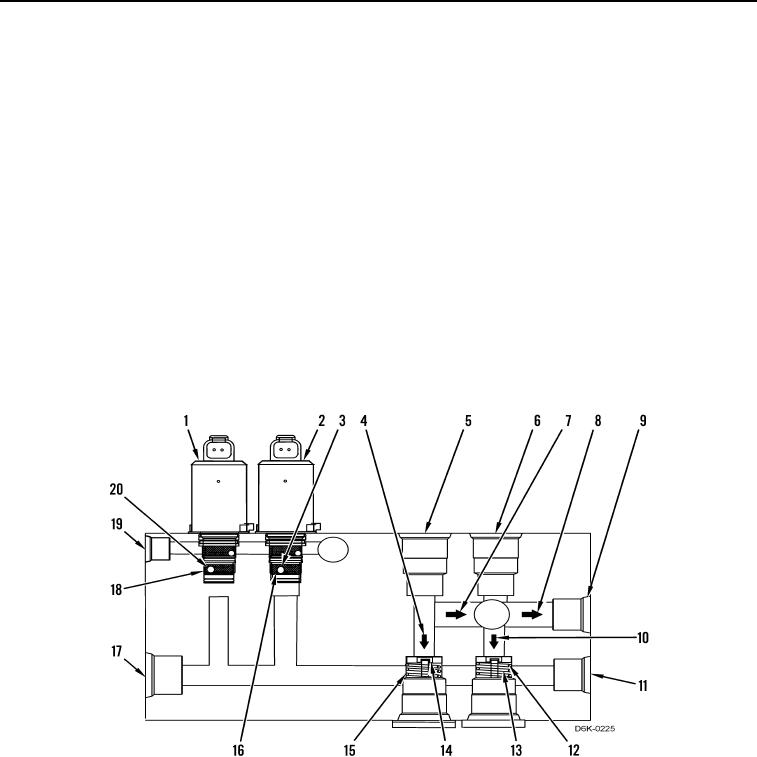
TM 5-2410-240-23-1
0007
HYDRAULIC SYSTEMS CONTINUED
The parking brake solenoid valve (Figure 15, Item 2) controls the parking brake system. When the operator starts
the machine, the solenoid valve is in an energized position. The spring-applied brake is released when pilot oil
flows to the brake housing from the ports (Figure 15, Items 3 and 16). When the operator turns the machine off, the
solenoid valve is de-energized. This allows the release of the pilot oil, which allows the brake pack to engage. This
locks the brakes in the engaged position.
As the pilot oil enters the return manifold through the port (Figure 15, Item 19), the flow of pilot oil controls the
transmission pilot supply (override) solenoid valve (Figure 15, Item 1). The transmission pilot supply (override)
solenoid valve does not allow energy to go to the hydrostatic controller. When the machine is in a static state, the
machine cannot be moved. The oil enters the solenoid valves of the hydrostatic pumps. At the same time, pilot oil
is also flowing through solenoid (Figure 15, Item 2) in order to release the brakes for forward movement.
The flow of return oil from the ports (Figure 15, Items 19, 5, 6, 3, and 20) is routed to the hydraulic tank by the port
(Figure 15, Item 17). The port (Figure 15, Item 18) is the pilot oil outlet to the hydrostatic pumps.
N OT E
The machine ECM disengages the transmission pilot supply (override) solenoid if it
detects a fault that requires the machine to shut down.
Figure 15. Powertrain Return Manifold Operation.
0007

